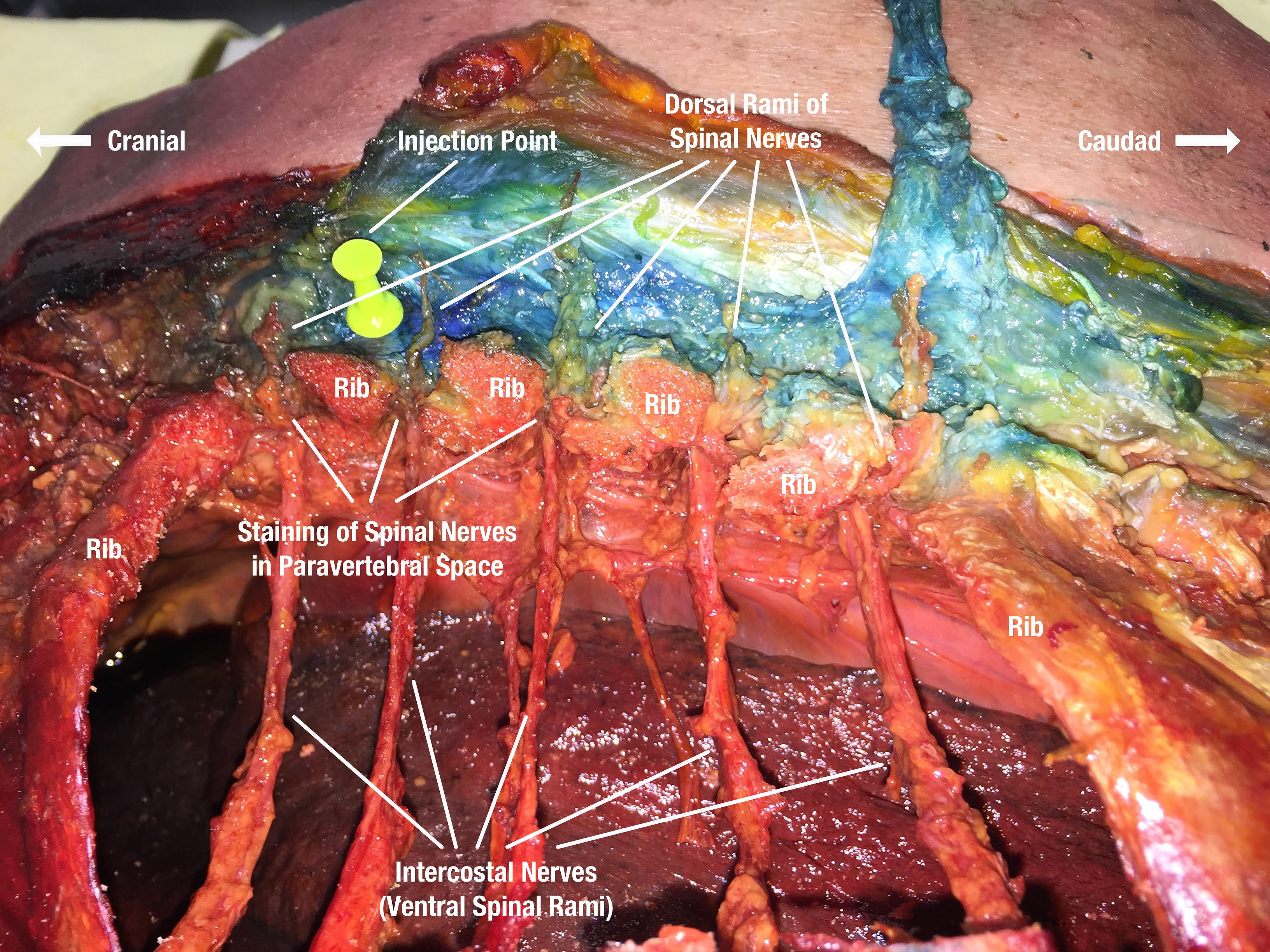Retrolaminar block: Cadaveric study.
Title: A sonoanatomical and cadavaric study of the ultrasound guided retrolaminar paravertebral block.
Investigating team: Fahd Aamir, George Shorten, Mr. M. Cronin
Background:Thoracic paravertebral blockade is a frequently performed procedure in anaesthetic practice conferring the benefits of good analgesia to patients with minimal risks compared to thoracic epidurals. There are a variety of techniques on how to perform a paravertebral block, with current practice utilising both landmark and ultrasound based techniques. This block is considered an advanced technique and difficult to perform given the depth of the paravertebral space, variety of techniques and the proximity of pleura and lung tissue.
Recently, a new technique of performing a paravertebral block called the retrolaminar block has been described which avoids directly accessing the paravertebral space. It instead targets the laminae of the vertebrae and by injecting high volumes of local anaesthetic to theoretically achieve paravertebral spread.
Although this technique has been evaluated in small clinical trials of patients with benefit, to date, there is no study of the actual distribution of fluid or the volumes required to achieve paravertebral spread within human subjects.
Objective: Our study uses human cadavers to elucidate the spread of injectate, dose dependance of volume required, the anatomical areas and nerves contacted by a retrolaminar block and finally the final position of catheters if utilised for this technique.
Preliminary Results: Pending
Current status: Manuscript in preparation

